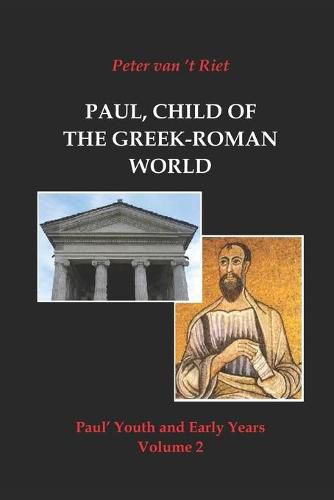Readings Newsletter
Become a Readings Member to make your shopping experience even easier.
Sign in or sign up for free!
You’re not far away from qualifying for FREE standard shipping within Australia
You’ve qualified for FREE standard shipping within Australia
The cart is loading…






Possibly Paul is the most complex biblical author. His letters were written in a complicated colloquial language. His arguments often ramble from one subject to another. The contrasts are almost always black-white: flesh as opposed to spirit, works as opposed to faith, the Law of Moses as opposed to the Law of Christ, slavery as opposed to freedom, etc. How did Paul come to his theology?
There is a romantic image of Paul. He is said to be born in a pious Pharisaic family and educated by the great Pharisaic scholar Gamaliel in Jerusalem. But this is hardly noticeable in Paul’s letters. However, they show a lot of affinity with the Greek-Roman culture of those days. In volume 1 of Paul’s Youth and Early Years the author discussed at some length that this romantic image of Paul’s isn’t correct historically. In reality he came from a Hellenistic-Jewish milieu in the Greek Diaspora.
In this second volume (which could be read independently) the author investigates the broader Greek-Roman environment of Paul’s youth. The book shows that Paul has been very much influenced by Roman culture. Paul is a Roman name! Moreover, the philosophical movements of Stoicism and Platonism - merged into Middle Platonism - have left their marks on his theology. But also the widespread mystery cults didn’t pass Paul unnoticed. These four phenomena from Paul’s time are explained, whereupon the author examines which traces they left in the letters. Then the image arises of Paul as a child of the Greek-Roman world. At a later age all these influences from his youth and early years have also contributed to the development of his theology.
By scrupulously reading Paul’s letters against the Greek-Roman background of his cultural, philosophical and religious environment many difficult passages become quite understandable. The question whether Paul has preached the original doctrine of Jesus of Nazareth unchanged, is mentioned briefly in this book, but will remain open for further investigation.
Dr. S.P. (Peter) van ‘t Riet (1948) studied Mathematics and Psychology at the Free University of Amsterdam and obtained his PhD in educational psychology. Until his retirement he worked as a teacher, researcher, director and professor in Higher Education. He published several books about the Jewish character of the New Testament. For more information about his publications, see his website www.petervantriet.nl.
$9.00 standard shipping within Australia
FREE standard shipping within Australia for orders over $100.00
Express & International shipping calculated at checkout
Possibly Paul is the most complex biblical author. His letters were written in a complicated colloquial language. His arguments often ramble from one subject to another. The contrasts are almost always black-white: flesh as opposed to spirit, works as opposed to faith, the Law of Moses as opposed to the Law of Christ, slavery as opposed to freedom, etc. How did Paul come to his theology?
There is a romantic image of Paul. He is said to be born in a pious Pharisaic family and educated by the great Pharisaic scholar Gamaliel in Jerusalem. But this is hardly noticeable in Paul’s letters. However, they show a lot of affinity with the Greek-Roman culture of those days. In volume 1 of Paul’s Youth and Early Years the author discussed at some length that this romantic image of Paul’s isn’t correct historically. In reality he came from a Hellenistic-Jewish milieu in the Greek Diaspora.
In this second volume (which could be read independently) the author investigates the broader Greek-Roman environment of Paul’s youth. The book shows that Paul has been very much influenced by Roman culture. Paul is a Roman name! Moreover, the philosophical movements of Stoicism and Platonism - merged into Middle Platonism - have left their marks on his theology. But also the widespread mystery cults didn’t pass Paul unnoticed. These four phenomena from Paul’s time are explained, whereupon the author examines which traces they left in the letters. Then the image arises of Paul as a child of the Greek-Roman world. At a later age all these influences from his youth and early years have also contributed to the development of his theology.
By scrupulously reading Paul’s letters against the Greek-Roman background of his cultural, philosophical and religious environment many difficult passages become quite understandable. The question whether Paul has preached the original doctrine of Jesus of Nazareth unchanged, is mentioned briefly in this book, but will remain open for further investigation.
Dr. S.P. (Peter) van ‘t Riet (1948) studied Mathematics and Psychology at the Free University of Amsterdam and obtained his PhD in educational psychology. Until his retirement he worked as a teacher, researcher, director and professor in Higher Education. He published several books about the Jewish character of the New Testament. For more information about his publications, see his website www.petervantriet.nl.